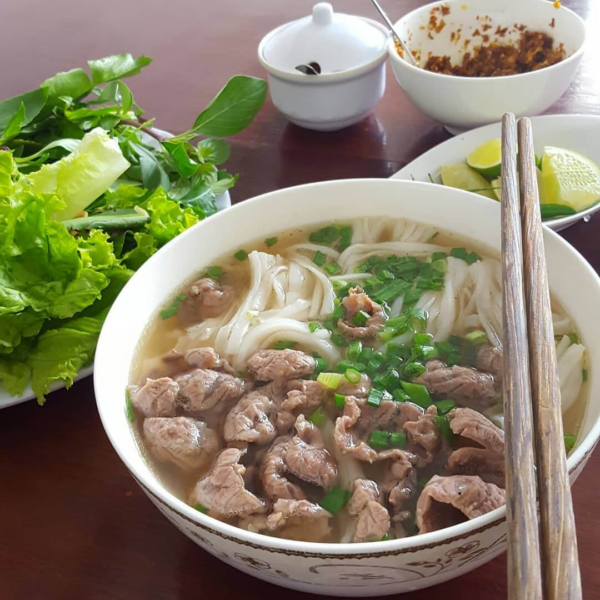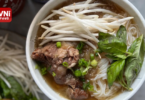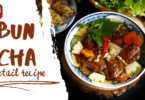Pho Noodle – Flavor Come With The Years
When you visit Vietnam, a Southeast Asian gem known for its rich and diverse culinary heritage, you embark on a journey through centuries of history and cultural fusion. Influenced by countless waves of colonization and invasion, Vietnamese cuisine has evolved into a tapestry of flavors and techniques, each telling a unique story. Amidst this dynamic culinary landscape, one dish has remained timeless and iconic: Pho (Pho Noodle).
Pho embodies the heart and soul of Vietnamese cuisine, offering a harmonious blend of savory broth, tender meats, and aromatic herbs. It’s a dish that has not only withstood the test of time but has also captivated palates worldwide. As we delve deeper into this beloved culinary treasure, we’ll explore its origins, the artistry behind its preparation, and the cultural significance that makes Pho a cherished part of Vietnam’s gastronomic identity. Join us in celebrating the rich legacy and irresistible charm of Pho, a dish that continues to warm hearts even the most demanding people.
Origins and History
Phohas a rich and storied history that traces back to the early 20th century. Born in the bustling streets of Hanoi, the capital city of Vietnam, Pho’s origins are rooted in a fusion of culinary influences from both Vietnamese and foreign cultures.
Historically, Pho’s exact origins remain a subject of debate among culinary historians. While some speculate that its roots can be traced back to Chinese or French culinary traditions, others attribute its creation to Vietnamese ingenuity and adaptation.
The evolution of Pho can be traced back to the late 19th or early 20th century, during Vietnam’s French colonial period. It is believed to have initially emerged as a humble street food sold by vendors in Hanoi’s Old Quarter. Over time, Pho gained popularity among the working-class population of Vietnam, thanks to its affordable price and hearty flavor.
However, it was not until the aftermath of the Vietnam War that Pho truly gained international recognition. Vietnamese refugees fleeing the war introduced Pho to the world beyond Vietnam’s borders, where it quickly captured the hearts and taste buds of people worldwide.
As Vietnamese immigrants resettled in countries around the globe, they brought Pho with them, turning it into a beloved culinary export. Despite its humble beginnings, Pho underwent various adaptations to suit local tastes and ingredients, resulting in regional variations that reflect the diverse cultural landscapes where it is enjoyed today.
Variations of Pho
This Vietnam’s iconic noodle soup is celebrated for its aromatic broth, tender meat, and fresh herbs. While Pho Bo (beef pho) is the most internationally recognized version, there are several delightful variations of this beloved dish, each with its own unique ingredients and flavor profiles. Here’s a closer look at the different types of Pho you might encounter:
- Pho Bo (Beef Pho):
- Pho Bo Tai: The most classic and widely enjoyed version, featuring thinly sliced rare beef cooked in the steaming hot broth.
- Pho Bo Chin: This version includes well-done beef brisket or flank, giving a heartier texture and deeper flavor.
- Pho Bo Gau: Incorporates fatty brisket, which adds a rich and succulent taste to the soup.
- Pho Bo Vien: Includes beef meatballs, often mixed with tendons and spices for added texture and a unique flavor profile.
- Pho Ga (Chicken Pho):
Made with a clear, fragrant chicken broth and tender slices of chicken, Pho Ga offers a lighter and equally delicious alternative to beef pho. It’s typically garnished with lime, cilantro, and fresh herbs.
Chicken Pho and Chicken Vermicelli have almost the same taste, try it now if you are a fan of this dish!
- Pho Hai San (Seafood Pho):
This variation combines a variety of seafood such as shrimp, squid, and fish, creating a refreshing and unique twist on the traditional pho broth.
Read more recipes for other dishes with flavors of the sea: Bun Mam Recipe
- Pho Chay (Vegetarian Pho):
A vegetarian take on the traditional soup, Pho Chay uses a flavorful vegetable broth and is filled with fresh vegetables, tofu, and sometimes mushrooms. It’s a healthy and light option for those avoiding meat.
- Pho Sate (Spicy Pho):
Infused with sate sauce, this version of pho is spicier than its counterparts. The addition of the sate sauce gives the broth a rich, fiery flavor that’s perfect for spice lovers.
Regional Variations:
- Pho Hanoi (Northern Pho): Known for its clear, light broth and minimal use of garnishes, Hanoi-style pho focuses on simplicity and purity of flavors.
- Pho Saigon (Southern Pho): In contrast, Saigon-style pho is often sweeter and more heavily garnished with herbs, bean sprouts, and various sauces, reflecting the vibrant culinary traditions of the south.
Each type of Pho offers a distinct experience, showcasing the diversity and richness of Vietnamese cuisine. Whether you prefer the robust flavors of beef pho, the delicate taste of chicken pho, or the spicy kick of pho sate, there’s a variation to suit every palate. Exploring these different types of pho not only satisfies the taste buds but also provides a deeper appreciation of Vietnam’s culinary heritage.
Discover Now: Vietnamese Pho In 3 Regions
Homemade Pho Bo Recipe
Ingredients:
- 2 large onions, halved
- 4-inch piece of ginger, halved lengthwise
- 5-6 pounds beef bones (knuckle, marrow, and/or oxtail)
- 1 pound beef chuck, thinly sliced
- 5 star anise pods
- 6 whole cloves
- 3-inch cinnamon stick
- 1 tablespoon coriander seeds
- 1 tablespoon fennel seeds
- 1 black cardamom pod
- 1 teaspoon whole black peppercorns
- 1 tablespoon salt
- 1 tablespoon sugar
- 1/4 cup fish sauce
- 1 pound dried flat rice noodles
- Garnishes: fresh herbs (Thai basil, cilantro, mint), bean sprouts, lime wedges, thinly sliced onion, thinly sliced chili peppers
Instructions:
Step 1: Char the Aromatics
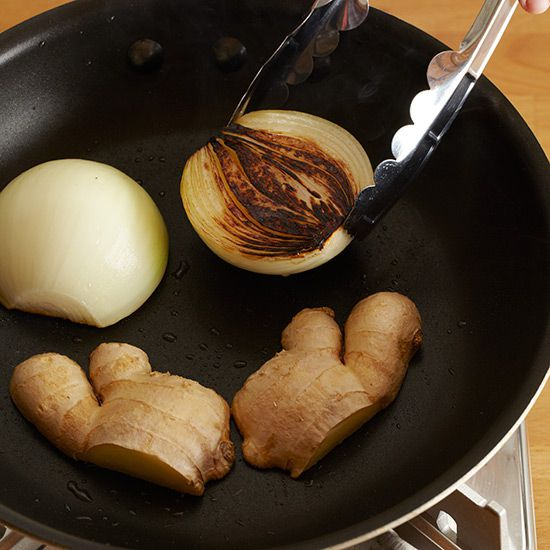
Place the halved onions and ginger on a baking sheet and broil in the oven until charred, about 15-20 minutes. Alternatively, char them over an open flame on a gas stove.
Step 2: Prepare the Broth
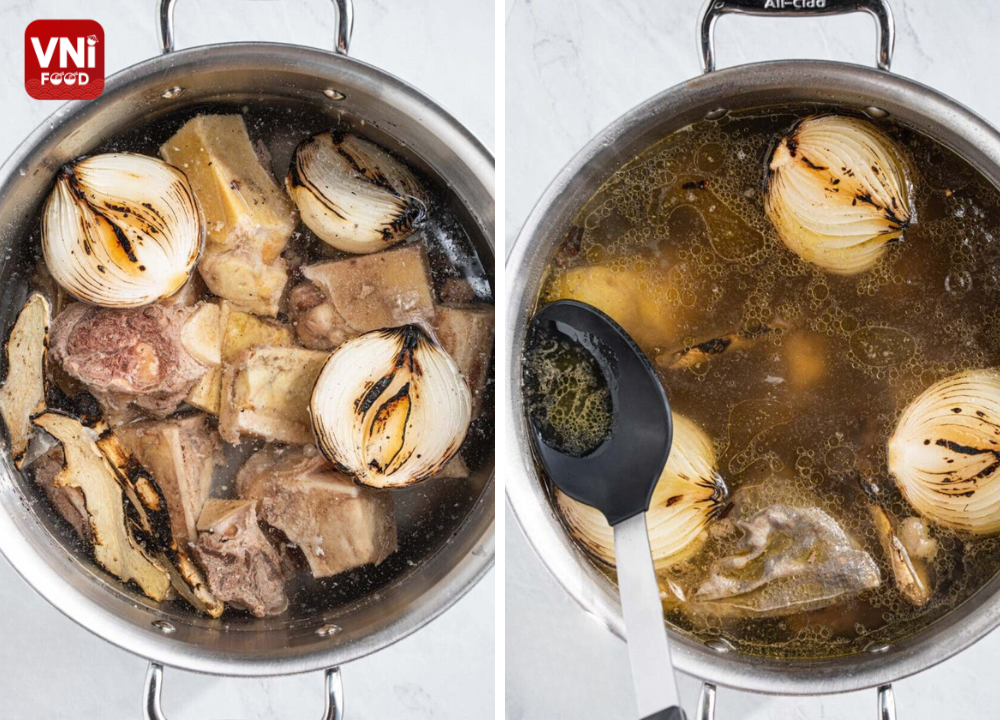
- In a large stockpot, add the beef bones and cover with water. Bring to a boil and let it simmer for 10 minutes. Then, discard the water, rinse the bones under cold water, and clean the pot.
- Return the bones to the pot along with the charred onions and ginger. Add enough water to cover the bones (about 4 quarts) and bring to a boil.
- Reduce the heat to low and let the broth simmer, uncovered, for at least 3 hours. Skim off any foam or impurities that rise to the surface.
Step 3: Toast the Spices
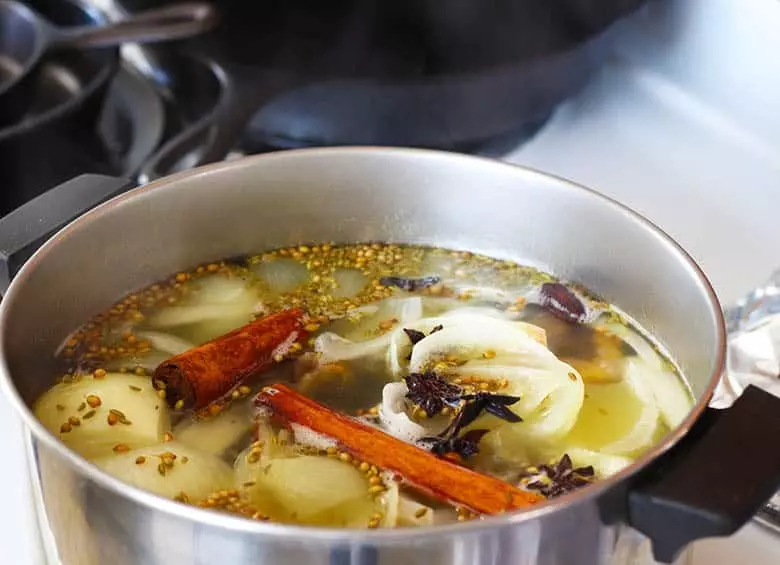
While the broth is simmering, toast the star anise, cloves, cinnamon stick, coriander seeds, fennel seeds, black cardamom pod, and black peppercorns in a dry skillet over medium heat until fragrant, about 2-3 minutes. Then, tie them in a cheesecloth or place them in a spice bag.
Step 4: Season the Broth
About 30 minutes before the broth is done, add the toasted spices, salt, sugar, and fish sauce to the pot. Continue simmering.
Step 5: Prepare the Noodles
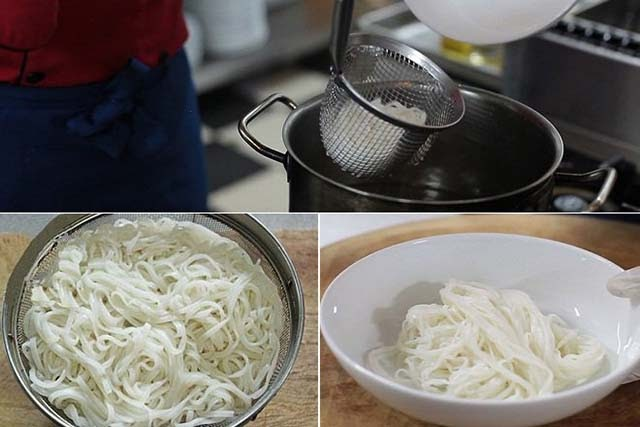
Cook the rice noodles according to the package instructions. Rinse under cold water to stop the cooking process and set aside.
Step 6: Assemble the Bowls
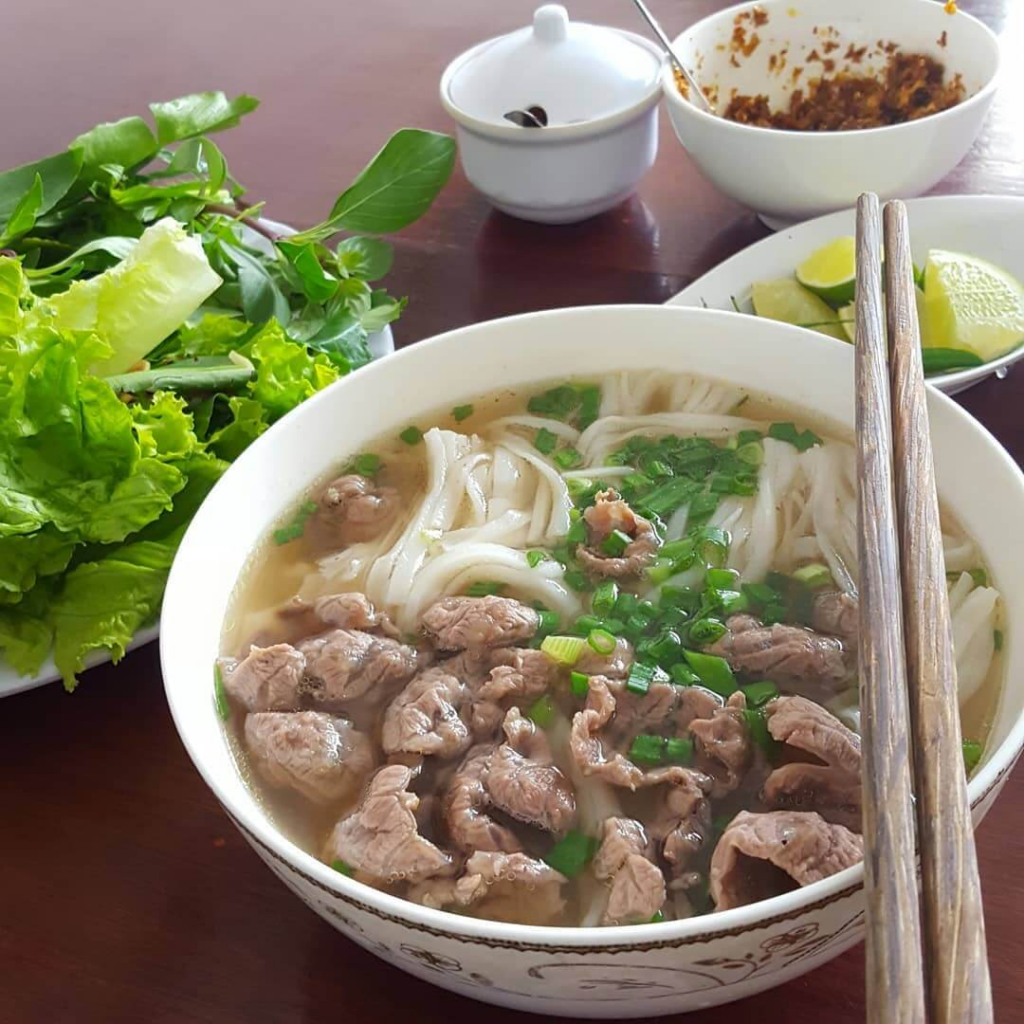
- Divide the cooked noodles among serving bowls. Top with slices of raw beef and any desired garnishes.
- Ladle the hot broth over the noodles and beef. The hot broth will cook the beef slices to perfection.
- Serve immediately with additional garnishes on the side.
With this recipe, you can recreate the rich and aromatic flavors of traditional beef pho right in your own kitchen. Adjust the seasoning to your taste preferences and don’t forget to customize your bowl with plenty of fresh herbs and condiments for a truly authentic experience.
Tips for Perfecting Your Homemade Pho Bo
- Quality Ingredients: Use high-quality beef bones and fresh, aromatic spices for the best flavor in your broth.
- Char the Aromatics: Charring the onions and ginger adds depth and smokiness to the broth.
- Skim the Foam: Skim off any foam or impurities that rise to the surface of the broth during simmering for a clearer and cleaner final product.
- Toast the Spices: Toasting the spices before adding them to the broth enhances their flavor and aroma.
- Low and Slow: Simmer the broth over low heat for several hours to extract maximum flavor from the bones and spices.
- Adjust Seasoning: Taste the broth periodically and adjust the seasoning with salt, sugar, and fish sauce as needed.
- Thinly Sliced Beef: For tender beef slices, freeze the beef briefly before slicing thinly against the grain.
- Cook Noodles Separately: Cook the rice noodles separately from the broth to prevent them from becoming mushy.
- Serve Hot: Serve the pho piping hot, with the broth boiling hot, to cook the raw beef slices in the bowl.
- Customize Garnishes: Offer a variety of fresh herbs, bean sprouts, lime wedges, thinly sliced onion, and chili peppers for diners to customize their bowls.
Conclusion
In conclusion, Pho, the beloved Vietnamese noodle soup, is not just a dish but a cultural icon that represents the soul of Vietnamese cuisine. Its widespread popularity and recognition, both domestically and internationally, underscore its significance as a culinary masterpiece. Awarded titles, accolades, and global acclaim further affirm Pho’s esteemed status in the culinary world. As we look to the future, Pho continues to evolve, adapting to new tastes and trends while retaining its essence. With its enduring appeal and timeless flavors, Pho is poised to remain a cherished culinary treasure for generations to come, inviting food lovers worldwide to indulge in its rich heritage and tantalizing aromas.
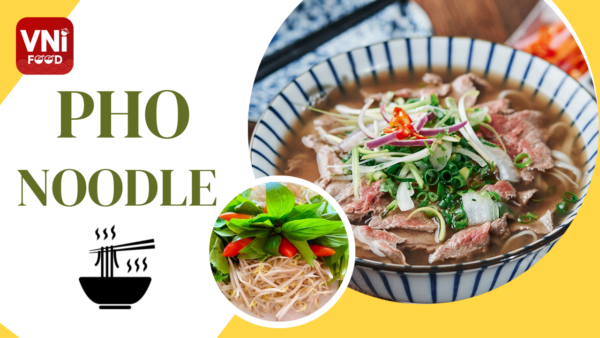
| Prep Time | 20 minutes |
| Cook Time | 2 hour |
| Servings |
people
|
- 2 onions, halved
- 4 inch piece of ginger, halved lengthwise
- 5-6 pounds beef bones (knuckle, marrow, and/or oxtail)
- 1 pound beef chuck, thinly sliced
- 5 star anise pods
- 6 whole cloves
- 3 inch cinnamon stick
- 1 tbsp coriander seeds
- 1 tbsp fennel seeds
- 1 black cardamom pod
- 1 tbsp whole black peppercorns
- 1 tbsp Salt
- 1 tbsp Sugar
- 1/4 cup Fish sauce
- 1 pound dried flat rice noodles
- Garnishes: fresh herbs (Thai basil, cilantro, mint), bean sprouts, lime wedges, thinly sliced onion, thinly sliced chili peppers
Ingredients
|

|
- Place the halved onions and ginger on a baking sheet and broil in the oven until charred, about 15-20 minutes. Alternatively, char them over an open flame on a gas stove.

- In a large stockpot, add the beef bones and cover with water. Bring to a boil and let it simmer for 10 minutes. Then, discard the water, rinse the bones under cold water, and clean the pot. Return the bones to the pot along with the charred onions and ginger. Add enough water to cover the bones (about 4 quarts) and bring to a boil. Reduce the heat to low and let the broth simmer, uncovered, for at least 3 hours. Skim off any foam or impurities that rise to the surface.
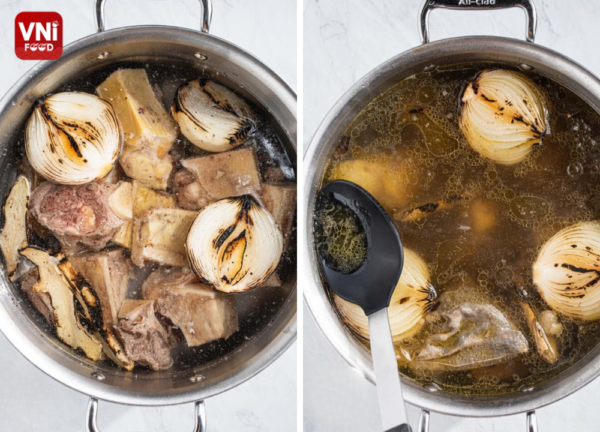
- While the broth is simmering, toast the star anise, cloves, cinnamon stick, coriander seeds, fennel seeds, black cardamom pod, and black peppercorns in a dry skillet over medium heat until fragrant, about 2-3 minutes. Then, tie them in a cheesecloth or place them in a spice bag.
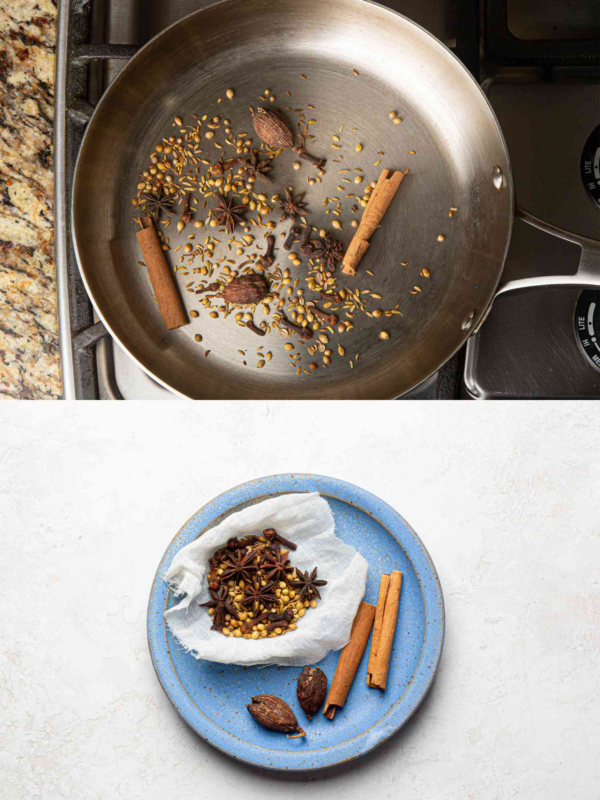
- About 30 minutes before the broth is done, add the toasted spices, salt, sugar, and fish sauce to the pot. Continue simmering.
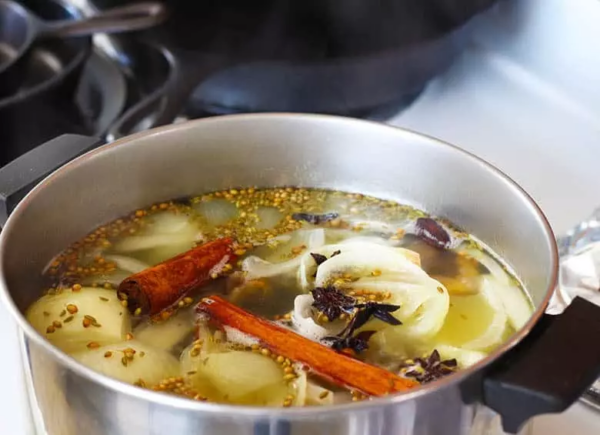
- Cook the rice noodles according to the package instructions. Rinse under cold water to stop the cooking process and set aside.
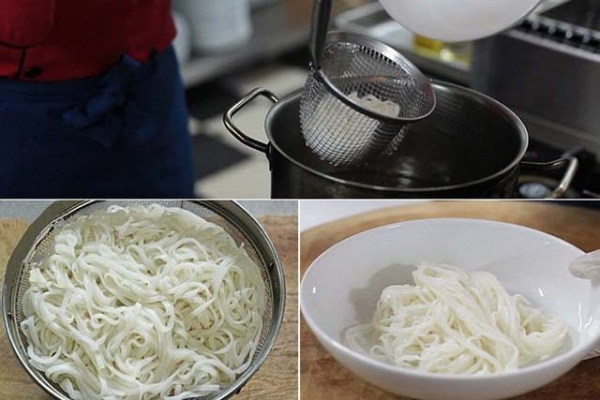
- Divide the cooked noodles among serving bowls. Top with slices of raw beef and any desired garnishes. Ladle the hot broth over the noodles and beef. The hot broth will cook the beef slices to perfection. Serve immediately with additional garnishes on the side.
